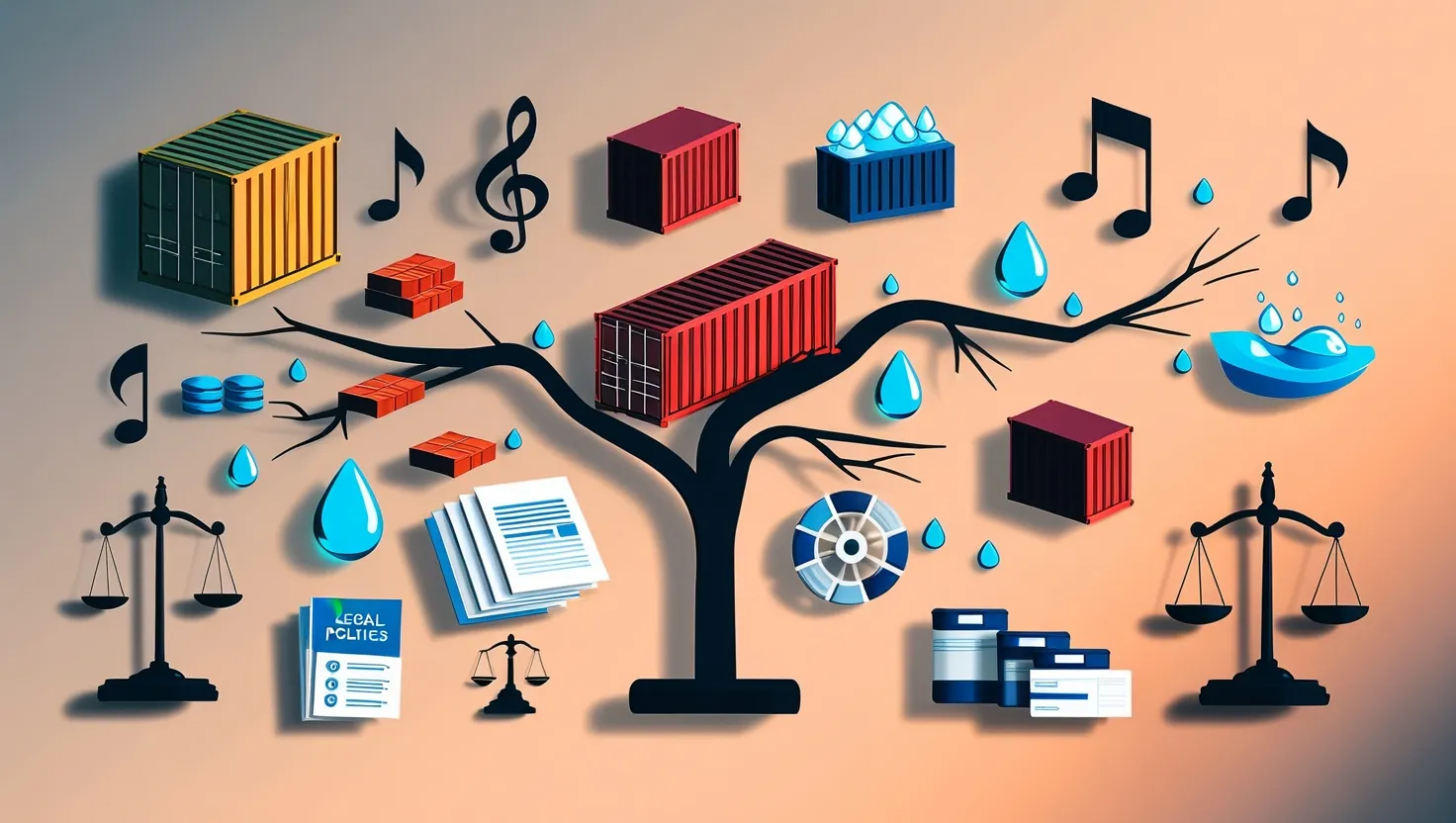As an investor, I’ve always been fascinated by the unconventional paths to wealth creation. While stocks and bonds form the backbone of most portfolios, there’s a whole world of alternative assets that can add spice to your investment strategy. Let’s explore seven unconventional assets that could potentially diversify your portfolio and provide unique opportunities for growth.
Have you ever considered owning a piece of your favorite song? Music royalties and intellectual property investments offer just that. When an artist’s music is played on the radio, streamed online, or used in a film, royalties are generated. As an investor, you can purchase the rights to these royalties and receive a steady stream of income. It’s like having a VIP pass to the music industry’s financial backstage.
“Music is everybody’s possession. It’s only publishers who think that people own it.” - John Lennon
This quote from John Lennon reminds us of the universal appeal of music. But as an investor, you can actually own a piece of this universal language. Platforms like Royalty Exchange allow you to bid on royalty rights for songs across various genres. Imagine earning money every time someone streams your favorite hit!
But what if I told you that you could invest in the outcome of legal battles? Litigation finance is an emerging asset class where investors fund commercial lawsuits in exchange for a portion of the settlement or judgment. It’s like being a silent partner in a high-stakes legal drama. This field requires a keen understanding of legal processes and risk assessment, but it can offer substantial returns if the case is successful.
Have you ever watched a courtroom drama and thought about the financial implications behind the scenes? That’s essentially what litigation finance taps into.
Now, let’s shift gears to something more tangible - equipment leasing. This involves purchasing industrial equipment and leasing it to businesses. It’s a way to generate steady income while potentially benefiting from tax advantages. Think of it as being a landlord, but instead of apartments, you’re renting out machinery.
“The best investment is in the tools of one’s own trade.” - Benjamin Franklin
Franklin’s wisdom applies well to equipment leasing. By investing in essential tools for various industries, you’re positioning yourself at the heart of economic activity.
Life settlements might sound morbid, but they represent a unique investment opportunity. This involves purchasing life insurance policies from individuals who no longer need or want them. As the investor, you continue paying the premiums and receive the death benefit when the policy matures. It’s a complex field with ethical considerations, but it can provide returns uncorrelated with traditional markets.
What are your thoughts on the ethics of such investments? It’s crucial to approach this area with sensitivity and a clear understanding of the implications.
In the digital age, virtual real estate has become increasingly valuable. Collectible domains are web addresses that have inherent value due to their relevance or catchiness. For example, owning “Pizza.com” could be incredibly valuable to the right buyer. It’s like owning prime real estate in the digital world.
Have you ever thought about the value of words in the digital space? A well-chosen domain name can be worth millions.
Shipping container investments might sound odd, but they play a crucial role in global trade. By purchasing containers and leasing them to shipping companies, you can tap into the steady flow of international commerce. It’s a tangible asset that quite literally moves the world economy.
“The sea is the universal sewer.” - Jacques Yves Cousteau
While Cousteau’s quote might seem pessimistic, it highlights the vast importance of our oceans - and by extension, the shipping industry that traverses them.
Lastly, let’s talk about water rights. As freshwater becomes an increasingly scarce resource, the rights to access and use water are becoming more valuable. This is a complex and regionally-specific investment, but it could be incredibly important in the coming decades.
“Whiskey is for drinking; water is for fighting over.” - Mark Twain
Twain’s humorous quote underscores a serious point - water is essential, and its value will only increase over time.
Now, you might be wondering how to incorporate these unconventional assets into your portfolio. Here’s the key - start small and do your homework. These assets often require specialized knowledge and can be less liquid than traditional investments. I’d recommend allocating no more than 5-10% of your portfolio to alternative assets, at least initially.
Before diving in, ask yourself: How much liquidity do I need? What’s my risk tolerance? Am I prepared to hold these investments for the long term? Understanding the tax implications is crucial too - some of these assets may be taxed differently than stocks or bonds.
Remember, diversification is about more than just spreading your money around. It’s about finding assets that behave differently from each other under various market conditions. These unconventional assets can potentially provide that diversification, but they come with their own unique risks and challenges.
As you explore these options, keep in mind that the investment landscape is always evolving. What’s unconventional today might become mainstream tomorrow. Stay curious, keep learning, and don’t be afraid to think outside the box.
“The individual investor should act consistently as an investor and not as a speculator.” - Benjamin Graham
Graham’s advice is timeless. Even when exploring unconventional assets, maintain the mindset of an investor, not a gambler.
So, are you ready to add some unconventional flavor to your portfolio? Start by researching one or two of these asset classes that intrigue you the most. Attend webinars, read industry reports, and connect with experts in the field. Knowledge is your best tool when venturing into new investment territories.
Remember, the goal isn’t to replace your core investments, but to complement them. These unconventional assets can potentially provide new streams of income, hedge against inflation, or offer growth opportunities uncorrelated with traditional markets.
As you embark on this journey of portfolio diversification, keep asking questions. How do these assets fit into your overall financial goals? What’s the long-term outlook for each of these sectors? How might regulatory changes affect these investments?
In the end, successful investing is about balancing risk and reward, staying informed, and being adaptable. These unconventional assets offer a chance to do just that, pushing the boundaries of traditional investing and potentially opening up new avenues for financial growth.
So, which of these unconventional assets piqued your interest the most? Are you ready to dip your toes into the world of alternative investments? Remember, the journey of a thousand miles begins with a single step. Your next investment decision could be the start of an exciting new chapter in your financial story.






